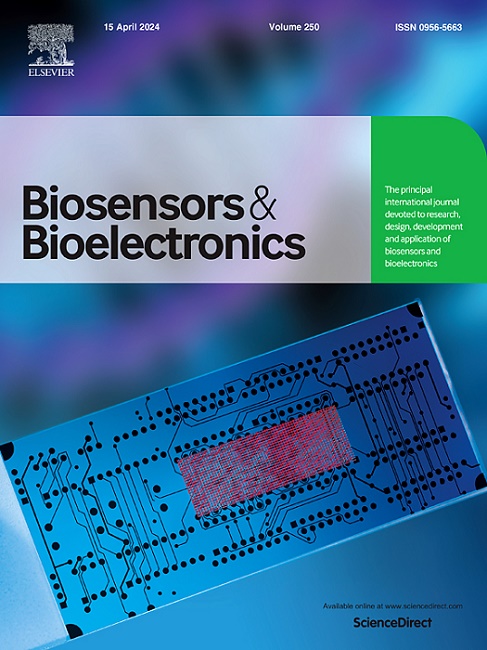微流控芯片系统在有色基抗菌药物敏感性测试中的应用综述。
IF 10.5
1区 生物学
Q1 BIOPHYSICS
引用次数: 0
摘要
临床细菌对公共卫生构成重大威胁,强调需要可靠和快速的诊断方法,以便早期发现疾病,从而促进患者康复。目前用于快速检测病原体的诊断方法通常需要数小时到数天,并且需要大量试剂和冗长的方案。微流控芯片系统为临床微生物检测提供了一个有前途的解决方案,通过最小的设置减少了检测时间,并为患者提供了一个即时护理解决方案。这些系统也更容易操作,并且随着技术的进步,可以提供更确凿的观察结果。本文综述了基于微流控芯片的系统在临床病原体检测中使用彩色荧光和非荧光染料进行表型测试的最新进展。非常规观察方法的最新进展,如智能手机和与显微镜相结合的软件,为微流体系统彻底改变护理点设备铺平了道路。这些系统面临的重大挑战包括抗菌素敏感性测试方案,这取决于颜色的形成、观察方法和减少检测时间。在未来,使用活培养物仍然是开发高效、准确的微流控诊断系统用于抗菌药物敏感性测试的主要障碍。本文章由计算机程序翻译,如有差异,请以英文原文为准。
Microfluidic chip systems for color-based antimicrobial susceptibility test a review
Clinical bacteria pose a significant public health threat, underscoring the need for reliable and rapid diagnostic methods for early disease detection, which can facilitate patient recovery. Current diagnostic methods for rapid pathogen detection often take hours to days and require numerous reagents and lengthy protocols. Microfluidic chip system offers a promising solution for clinical microbiology detection by reducing detection time with minimal setup and providing a point-of-care solution for patients. These systems are also easier to handle and, with advancements in technology, offer more conclusive observations. This review focuses on recent developments in microfluidic chip-based systems that use colored fluorescent and non-fluorescent dyes for phenotypic tests in clinical pathogen detection. Recent advancements in non-conventional observation methods, such as smartphones and software combined with microscopy, are paving the way for microfluidic systems to revolutionize point-of-care devices. Significant challenges for these systems include antimicrobial susceptibility testing protocols, which depend on color formation, observation methods, and reducing detection time. In the future, working with live cultures remains a major hurdle in developing efficient and accurate microfluidic diagnostic systems for antimicrobial susceptibility testing.
求助全文
通过发布文献求助,成功后即可免费获取论文全文。
去求助
来源期刊

Biosensors and Bioelectronics
工程技术-电化学
CiteScore
20.80
自引率
7.10%
发文量
1006
审稿时长
29 days
期刊介绍:
Biosensors & Bioelectronics, along with its open access companion journal Biosensors & Bioelectronics: X, is the leading international publication in the field of biosensors and bioelectronics. It covers research, design, development, and application of biosensors, which are analytical devices incorporating biological materials with physicochemical transducers. These devices, including sensors, DNA chips, electronic noses, and lab-on-a-chip, produce digital signals proportional to specific analytes. Examples include immunosensors and enzyme-based biosensors, applied in various fields such as medicine, environmental monitoring, and food industry. The journal also focuses on molecular and supramolecular structures for enhancing device performance.
 求助内容:
求助内容: 应助结果提醒方式:
应助结果提醒方式:


